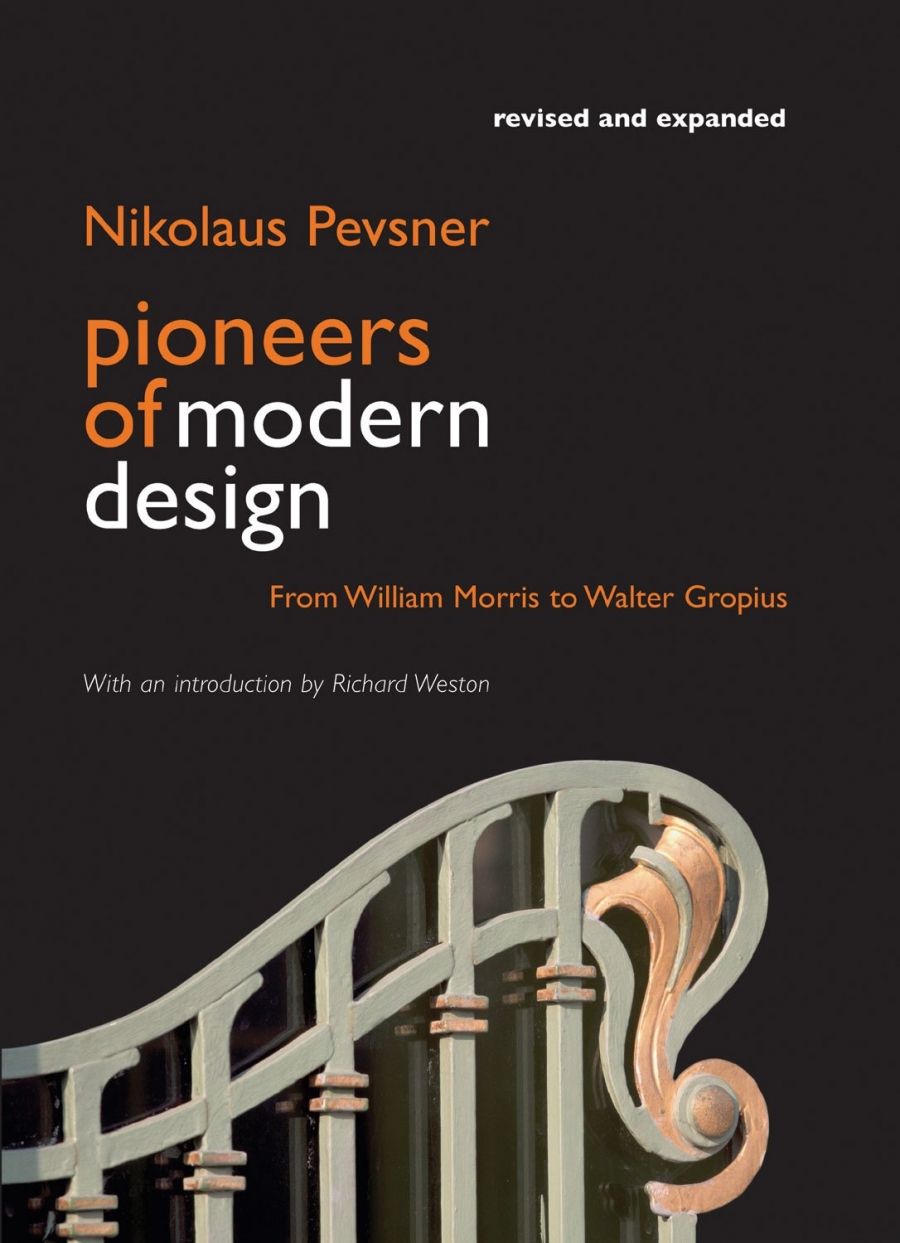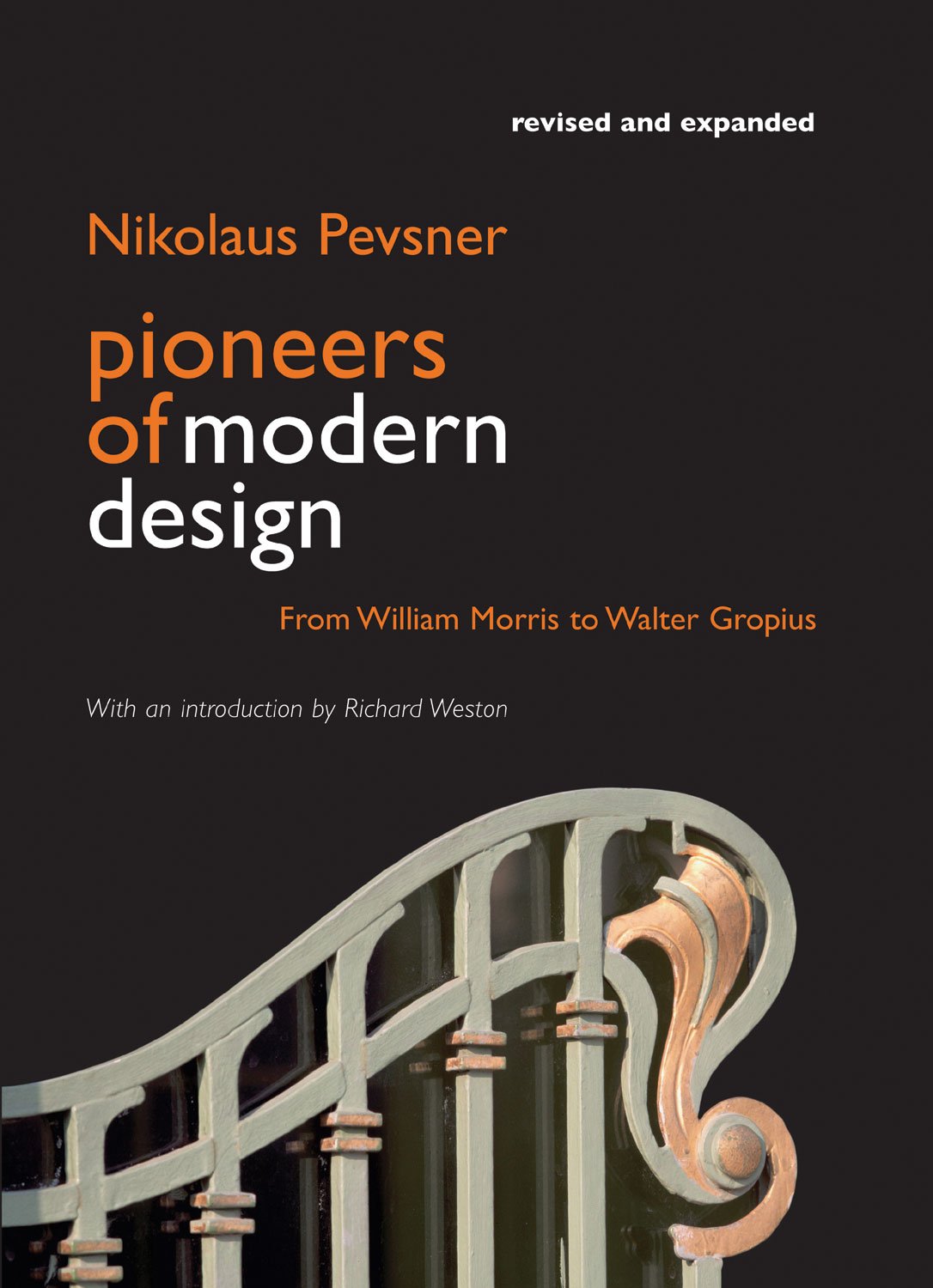
- Free Article: No
- Contents Category: Art
- Review Article: Yes
- Article Title: Lines of strength and beauty
- Online Only: No
- Custom Highlight Text:
‘All machinery may be beautiful, when it is undecorated even. Do not seek to decorate it. We cannot but think all good machinery is graceful, also, the line of the strength and the line of the beauty being one.’
Although ridiculed in his own day as a fashion victim in dress and manners, Oscar Wilde, the exemplar of the excesses of the Aesthetic Movement, is not normally quoted in design histories. Being Wilde, what he wrote above is probably not in praise of the machine, but its inclusion in Nikolaus Pevsner’s Pioneers of Modern Design: From William Morris to Walter Gropius (first published in 1936) shows the breadth of reference in this excellent and now classic introduction to modern design and twentieth-century modernism.
- Book 1 Title: Pioneers of Modern Design
- Book 1 Subtitle: From William Morris to Walter Gropius
- Book 1 Biblio: Yale University Press, $85 hb, 192 pp, 0300105711
- Book 1 Cover Small (400 x 600):

- Book 1 Cover (800 x 1200):

Many of the design methods and practices we are familiar with today owe a great debt to the period from the 1860s to the 1930s, that is from William Morris (1834–96) to Walter Gropius (1883–1969), the heroes of Pevsner’s subtitle. Britain, the most industrialised country during the first half of the nineteenth century, was the first to reap the considerable economic benefits of the Industrial Revolution. It was also the first to endure the horrors. Not only were the industrialised conditions in which people were compelled to work appalling, but these mechanised processes resulted in the production of huge quantities of manufactured goods, often made with little regard for design quality. The low point (or high point, depending upon your point of view – and Pevsner entertains only his own) for mass-produced, consumer-driven British design was reached at the first of the great blockbuster exhibitions, the Great Exhibition of the Works of Industry of All Nations of 1851, held in London in what became known as the Crystal Palace, itself a marvel of technology and design. Taking ideas developed by John Ruskin, and appalled by what was displayed at the Exhibition, several mid-century British designers set about reforming design and production, by returning to basics (in many cases the Middle Ages) in order to reinvent good design. In Britain, this was achieved by a resurgence in handcrafted works, also taken up in the US and Australia. The logical (and practical) outcome of improved design in a mechanised age is industrialisation. It was developed most eloquently in Germany during the early twentieth century through the great and influential design teaching school, the Bauhaus, with its famous modernist building designed in 1925 by Gropius.
Pevsner (1902–83) was a German-born and trained art historian. A Jew, he left Germany in 1933 and settled in Britain in 1934, where he subsequently had a distinguished career as an architectural historian. He was a staunch admirer of the British Arts and Crafts Movement and of what he regarded as its inevitable outcome, the Bauhaus in Germany. It is as an architectural and design historian that Pevsner excels in elegant prose (his chapter on painting of the 1890s is the least interesting). Fluent in German and English, and immersed in the design literature of both countries, he was ideally placed to explore the strong influences of British nineteenth-century design and architecture on Germany, and its repercussions in the rest of Europe and in the US. The chapter ‘Engineering and Architecture in the Nineteenth Century’ neatly marries the technological development of iron with architecture. Structural use of iron increased in the second half of the eighteenth century and transformed architecture during the nineteenth, enabling vast graceful bridge spans, such marvels as the Crystal Palace, the Eiffel Tower and Chicago skyscrapers.
Pioneers of Modern Design was first published in London in 1936, with second and third editions in 1949 and 1960. The classic status of the work in design history has warranted this new (2005) edition, with additional texts and high-quality colour reproductions. Rereading Pioneers after twenty years, it is surprising how pertinent and apposite it still seems. Pevsner traces the development of modern (early twentieth-century) design from its origins in British design of the nineteenth century. He champions the work of Morris and his followers in the Arts and Crafts Movement. Admirers of Morris – myself included – will have their judgment vindicated. In 1861 Morris founded his interior decorating firm, Morris, Marshall, Faulkner & Co., and Pevsner notes: ‘This event marks the beginning of a new era in Western Art.’
Pevsner’s interest in the avant-garde is both his strength and limitation. Since the 1960s scholars and collectors have looked more carefully at the broader areas of design during the second half of the nineteenth century; works and designers derided or ignored by Pevsner and other modernist historians are now increasingly being reassessed and rehabilitated. The complexity of the relationship between art nouveau and the Arts and Crafts Movement is also now understood differently. Nonetheless, Pevsner’s insight and breadth of reference still make this compelling reading.


Comments powered by CComment